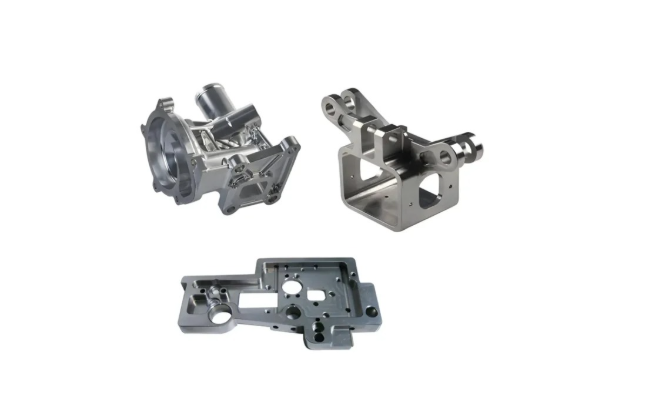You might not know that many SOW automation tools can inadvertently become weak points in your cybersecurity framework if not properly managed. When you’re selecting a services provider, focusing solely on automation features without a thorough evaluation of their cybersecurity measures can be a costly oversight. It’s essential to look for providers that seamlessly blend automation with strong security protocols like encryption and multi-factor authentication. So, how do you balance these dual priorities to ensure both efficiency and security? Let’s explore the critical factors that will guide you in making an informed choice.
Understanding SOW Automation
To grasp SOW automation, you need to recognize how it streamlines the creation, management, and execution of Statements of Work through advanced technologies. By automating SOW processes, you can eliminate manual inefficiencies, reduce errors, and ensure compliance with organizational standards. Yet, you must be aware of implementation challenges that come with integrating this technology into your existing workflows. One of the primary implementation challenges involves aligning SOW automation tools with your current systems. This requires a thorough assessment of your existing processes and possibly re-engineering them to fit the new automated framework. Moreover, training your team to adapt to these changes is crucial for a smooth transition.
Despite these challenges, the potential benefits of SOW automation are compelling. Automated SOWs can lead to significant time savings and cost reductions. By employing advanced technologies like AI and machine learning, you can achieve greater accuracy in scoping projects and tracking deliverables. This not only enhances project management efficiency but also minimizes risks associated with human error. Address these challenges strategically, and you’ll unlock the full potential of SOW automation, driving better outcomes for your projects and organization.
The Importance of Cybersecurity
In an era where data breaches and cyber threats are rampant, prioritizing cybersecurity is essential for safeguarding your automated SOW processes. Cybersecurity threats can compromise sensitive data and disrupt business operations. Incorporating robust data protection measures helps ensure your SOW automation is resilient against potential attacks.
Effective cybersecurity strategies involve more than just firewalls and antivirus software. They require a comprehensive approach that includes regular system updates, employee training, and real-time threat monitoring. By adopting these practices, you mitigate risks and enhance the integrity of your data.
You should also consider the regulatory landscape. Compliance with data protection regulations like GDPR and CCPA isn’t just a legal requirement; it’s a critical component of your cybersecurity framework. Failing to comply can result in hefty fines and reputational damage, which can be far more costly than investing in robust cybersecurity measures.
Incorporating a cybersecurity services provider into your SOW automation strategy not only protects your data but also builds trust with your clients and partners. When you demonstrate a commitment to data protection, you establish your organization as a reliable, forward-thinking entity in the industry. Prioritizing cybersecurity is a strategic move that pays dividends in risk management and operational efficiency.
Key Features to Look For
When evaluating SOW automation solutions, prioritize features that enhance security, streamline workflows, and ensure compliance with industry regulations. Start by ensuring that automation integration is seamless with your existing IT infrastructure. The solution should effortlessly blend with your current systems, reducing manual intervention and minimizing errors.
Security protocols are crucial. Look for solutions that offer robust encryption, multi-factor authentication, and continuous monitoring. These features help protect sensitive data and prevent unauthorized access. Also, ensure the platform provides real-time threat detection and automated remediation to quickly address potential vulnerabilities.
Workflow automation should be another key feature. The system should allow you to automate repetitive tasks, reducing human error and increasing efficiency. Customizable workflows will enable you to adapt the solution to your specific business needs, ensuring that it can scale as your organization grows. Compliance management is non-negotiable. The solution should help you adhere to relevant industry standards and regulations, such as GDPR or HIPAA. Look for features like audit trails and compliance reporting to maintain transparency and accountability.
Evaluating Service Providers
After identifying key features, the next step involves rigorously evaluating service providers to ensure they meet your SOW automation and cybersecurity needs. Start by setting clear evaluation criteria that align with your strategic goals. Look into their service offerings—do they provide comprehensive solutions that cover both SOW automation and robust cybersecurity measures?
Assess their technical expertise by examining case studies or client testimonials. Have they successfully implemented similar solutions in your industry? This can provide insights into their capacity to handle your specific requirements. Consider the scalability of their offerings. Can they adapt to your growing needs without compromising on security? Evaluate their risk management strategies—do they have protocols for data breaches or other cybersecurity threats? It’s crucial that they demonstrate a proactive approach to risk mitigation.
Additionally, review their compliance with industry standards and regulations. A provider that adheres to recognized frameworks like ISO/IEC 27001 shows a commitment to maintaining high security standards. Lastly, don’t forget to scrutinize their customer support. Efficient, responsive support can make a significant difference during critical times.
Making the Final Decision
Making the final decision hinges on a thorough analysis of all gathered data and aligning it with your strategic priorities and risk management protocols. You need to evaluate how each service provider’s capabilities match your specific needs. The decision-making process should emphasize not only technical expertise but also the provider’s alignment with your cybersecurity goals. Begin by weighing your options methodically. Compare service providers side-by-side, focusing on their proficiency in SOW automation and their approach to cybersecurity.
Analyze their track record, customer reviews, and case studies to gauge reliability and effectiveness. Pay close attention to how they handle data security, compliance, and incident response. Your final considerations should include a detailed risk assessment. Determine how each provider mitigates potential threats and integrates with your existing infrastructure. Consider their support and maintenance services, as these are crucial for long-term success.
Conclusion
When choosing an SOW automation services provider, don’t underestimate the importance of cybersecurity. Did you know that 43% of cyber attacks target small businesses? Ensure your provider offers robust features like encryption and multi-factor authentication. Evaluate their technical expertise, compliance management, and customer support thoroughly. By making cybersecurity a priority, you’ll protect sensitive data and enhance operational efficiency, securing a reliable and effective partnership for your business.
ALSO READ: Guarding Your Inbox: How to Stay Vigilant Against Phishing Emails











